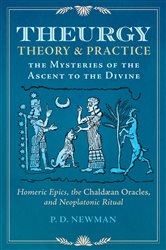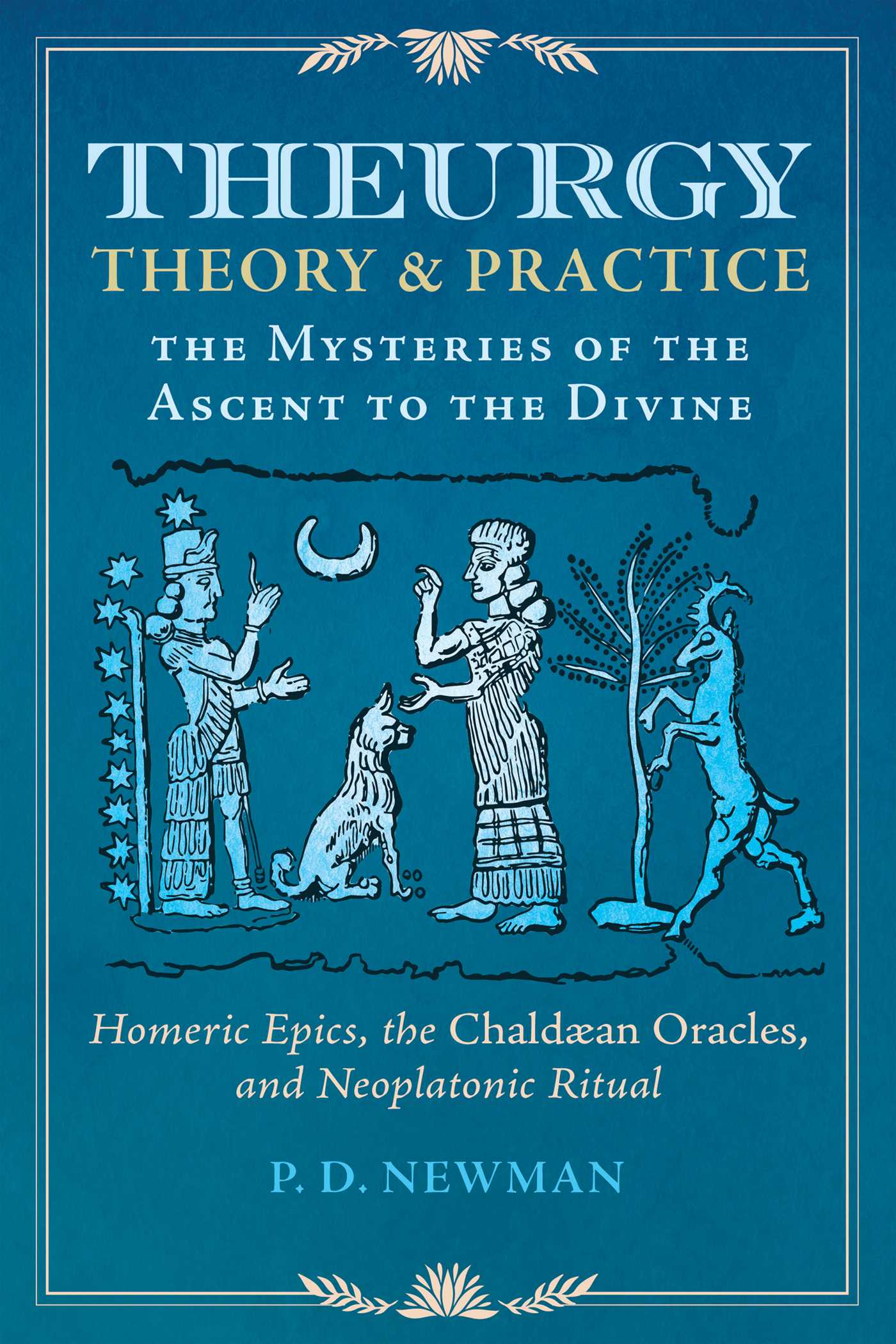
Theurgy: Theory and Practice | Free Book

The Mysteries of the Ascent to the Divine
Connects the magical practice of theurgy to the time of Homer
• Explores the many theurgic themes and events in the Odyssey and the Iliad
• Analyzes the writings of Neoplatonists Porphyry and Proclus, showing how both describe the technical ritual praxis of theurgy in Homeric terms
• Examines the methods of telestikē, a form of theurgic statue animation and technique to divinize the soul, and how theurgy is akin to shamanic soul flight
First defined by the second century Chaldean Oracles, theurgy is an ancient magic practice whereby practitioners divinized the soul and achieved mystical union with a deity, the Demiurge, or the One.
In this detailed study, P. D. Newman pushes the roots of theurgy all the way back before the time of Homer. He shows how the Chaldean Oracles were not only written in Homeric Greek but also in dactylic hexameter, the same meter as the epics of Homer. Linking the Greek shamanic practices of the late Archaic period with the theurgic rites of late antiquity, the author explains how both anabasis, soul ascent, and katabasis, soul descent, can be considered varieties of shamanic soul flight and how these practices existed in ancient Greek culture prior to the influx of shamanic influence from Thrace and the Hyperborean North.
The author explores the many theurgic themes and symbolic events in the Odyssey and the Iliad, including the famous journey of Odysseus to Hades and the incident of the funeral pyre of Patroclus. He presents a close analysis of On the Cave of the Nymphs, Porphyry’s commentary on Homer’s Odyssey, as well as a detailed look at Proclus’s symbolic reading of Homer’s Iliad, showing how both of these Neoplatonists describe the philosophical theory and the technical ritual praxis of theurgy. Using the Chaldean Oracles as a case study, Newman examines in detail the methods of telestikē, a form of theurgic statue animation, linking this practice to ancient Egyptian and Greek traditions as well as theurgic techniques to divinize the soul.
Revealing how the theurgic arts are far older than the second century, Newman’s study not only examines the philosophical theory of theurgy but also the actual ritual practices of the theurgists, as described in their own words.
• Explores the many theurgic themes and events in the Odyssey and the Iliad
• Analyzes the writings of Neoplatonists Porphyry and Proclus, showing how both describe the technical ritual praxis of theurgy in Homeric terms
• Examines the methods of telestikē, a form of theurgic statue animation and technique to divinize the soul, and how theurgy is akin to shamanic soul flight
First defined by the second century Chaldean Oracles, theurgy is an ancient magic practice whereby practitioners divinized the soul and achieved mystical union with a deity, the Demiurge, or the One.
In this detailed study, P. D. Newman pushes the roots of theurgy all the way back before the time of Homer. He shows how the Chaldean Oracles were not only written in Homeric Greek but also in dactylic hexameter, the same meter as the epics of Homer. Linking the Greek shamanic practices of the late Archaic period with the theurgic rites of late antiquity, the author explains how both anabasis, soul ascent, and katabasis, soul descent, can be considered varieties of shamanic soul flight and how these practices existed in ancient Greek culture prior to the influx of shamanic influence from Thrace and the Hyperborean North.
The author explores the many theurgic themes and symbolic events in the Odyssey and the Iliad, including the famous journey of Odysseus to Hades and the incident of the funeral pyre of Patroclus. He presents a close analysis of On the Cave of the Nymphs, Porphyry’s commentary on Homer’s Odyssey, as well as a detailed look at Proclus’s symbolic reading of Homer’s Iliad, showing how both of these Neoplatonists describe the philosophical theory and the technical ritual praxis of theurgy. Using the Chaldean Oracles as a case study, Newman examines in detail the methods of telestikē, a form of theurgic statue animation, linking this practice to ancient Egyptian and Greek traditions as well as theurgic techniques to divinize the soul.
Revealing how the theurgic arts are far older than the second century, Newman’s study not only examines the philosophical theory of theurgy but also the actual ritual practices of the theurgists, as described in their own words.
In The Press
“P.D. Newman’s new book Theurgy: Theory and Practice, is one of the best and most important books I have read in a long time. He does for theurgy what Jake Stratton-Kent did for goetia, taking it back to its archaic roots, showing the development, providing excellent scholarship, and workable material. This is a great book.”
- Title: Theurgy: Theory and Practice | Free Book
- Author: Steven
- Created at : 2024-10-19 19:13:04
- Updated at : 2024-10-27 04:17:10
- Link: https://novels-ebooks.techidaily.com/210816450-9781644118375-theurgy-theory-and-practice/
- License: This work is licensed under CC BY-NC-SA 4.0.
